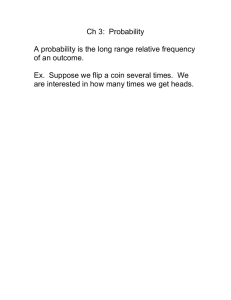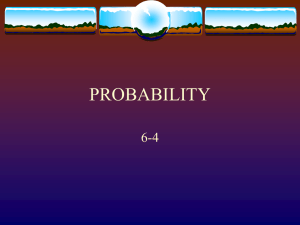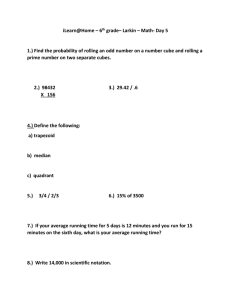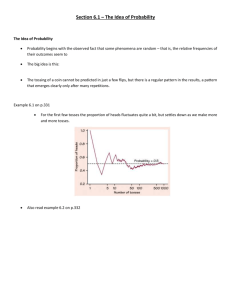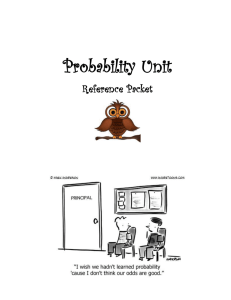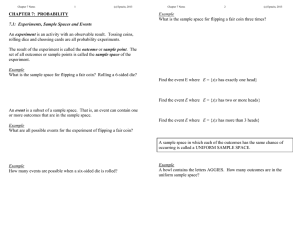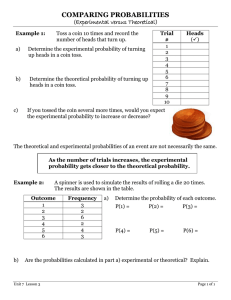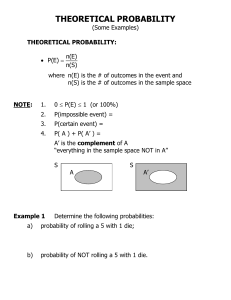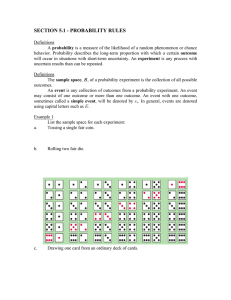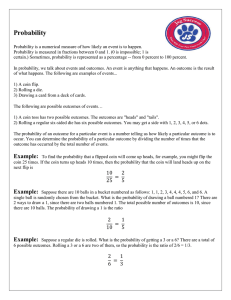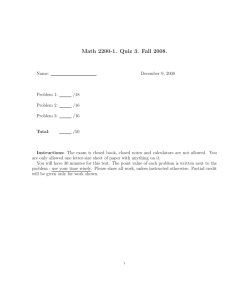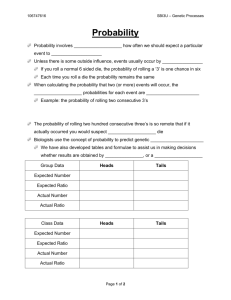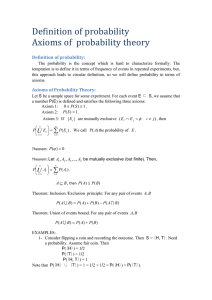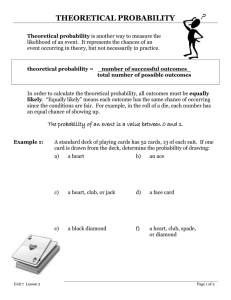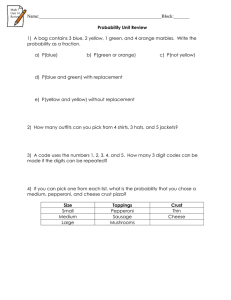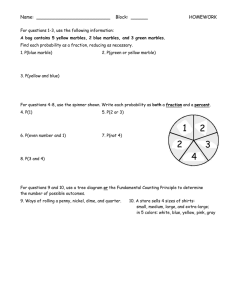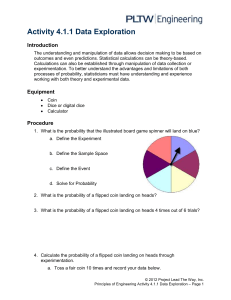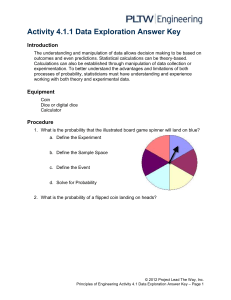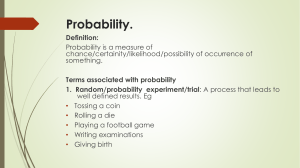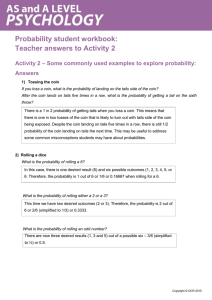Document 14147158
advertisement
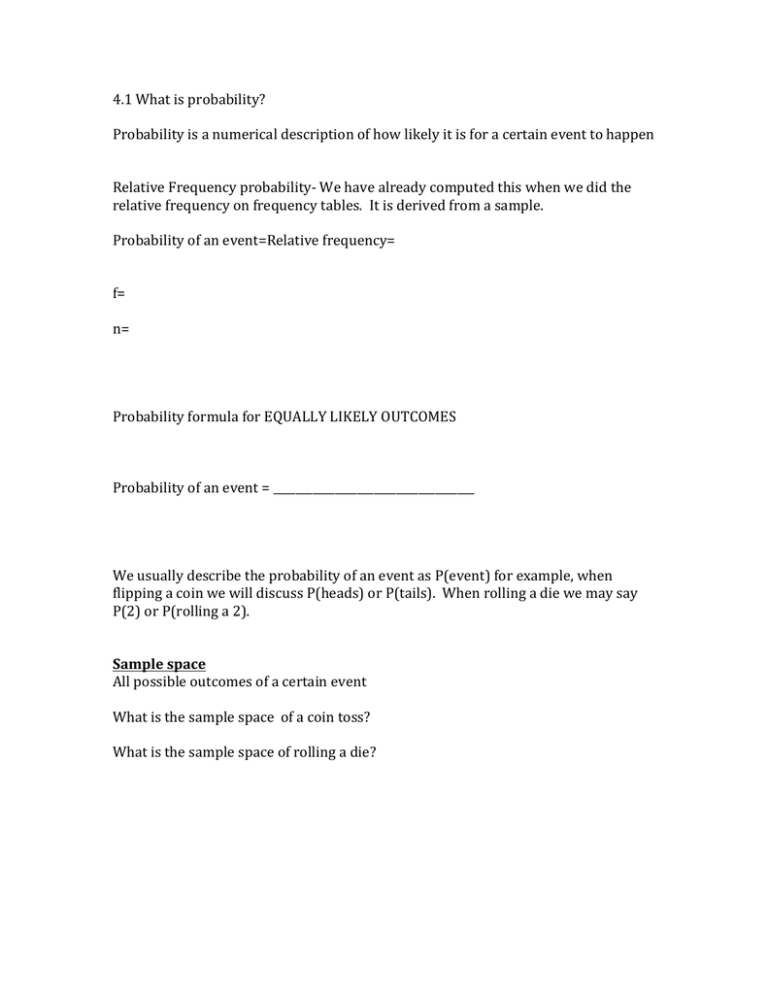
4.1 What is probability? Probability is a numerical description of how likely it is for a certain event to happen Relative Frequency probability-­‐ We have already computed this when we did the relative frequency on frequency tables. It is derived from a sample. Probability of an event=Relative frequency= f= n= Probability formula for EQUALLY LIKELY OUTCOMES Probability of an event = ____________________________________ We usually describe the probability of an event as P(event) for example, when flipping a coin we will discuss P(heads) or P(tails). When rolling a die we may say P(2) or P(rolling a 2). Sample space All possible outcomes of a certain event What is the sample space of a coin toss? What is the sample space of rolling a die? P(event A) Find the probability of the following events Coin P(Heads) Die P(rolling a 6) Cards P(K) P(Club) Complement of an Event – the opposite of an event (complement of A is “not A”) P(not A)=1-­‐P(A) Find the probability of drawing a card other than a queen Find the probability of rolling a number other a 3 The important facts about probability 1. The probability of an event is denoted by P(A) 2. The probability of an event is a number between 0 and 1. The closer to 1, the more likely the event is 3. The sum of the probabilities of all outcomes in a sample space is 1 4. Probabilities can be assigned by using three methods: intuition, relative frequency, or the formula for equally likely outcomes 5. The probability of an event not occurring is denoted by P(not A) 6. P(A)+P(not A)=1
